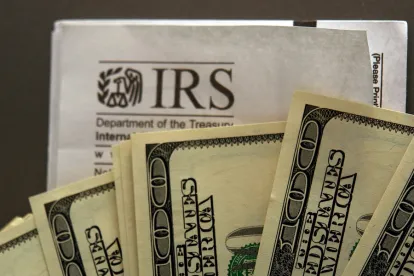Borenstein v. Commissioner is an interesting opinion involving the intersection of canons of statutory construction and jurisdiction. Recently, the US Court of Appeals for the Second Circuit reversed the US Tax Court’s holding in Borenstein that the court lacked jurisdiction to order a refund of an undisputed overpayment made by the taxpayer. The case, which we discussed in a prior post, involved interpreting statutory provisions dealing with claims for a refund after a notice of deficiency was issued. The Tax Court’s holding was based on the application of the plain meaning rule to Internal Revenue Code (Code) Section 6512(b)(3), which limit its jurisdiction to order refunds of overpayments.
In the Tax Court proceeding, the taxpayer and the government disagreed on the interpretation of the words “(with extensions)” in Code section 6512(b)(3) which provides that the Tax Court has jurisdiction to order a refund of overpayments made during the three years immediately preceding the mailing of the notice of deficiency (i.e., a three‐year look‐back period) if the taxpayer failed to file a return before the mailing of the notice of deficiency and “the date of the mailing of the notice of deficiency is during the third year after the due date (with extensions) for filing the return of tax.” The Tax Court held that “(with extensions)” delayed by six months the beginning of the “third year after the due date,” leaving only two years from the notice of deficiency, and did not reach the taxpayer’s overpayment twenty-six months earlier. Therefore, the Tax Court held that it lacked jurisdiction over the refund claim, which meant that the taxpayer could not recover the $32,441 that the parties agreed was overpaid to the government.
The Second Circuit reversed the Tax Court decision. The Second Circuit agreed with the taxpayer that “(with extensions)” had the effect of extending by six months the “third year after the due date” and therefore, the Tax Court had jurisdiction to look back three years and allow the taxpayer to recover overpayment. Because it found the statutory language ambiguous, the Second Circuit looked to the legislative history to Code section 6512(b)(3) to discern congressional meaning and purpose. The Second Circuit found that the legislative history supported the taxpayer’s position, noting that “we must [not] interpret the relevant words [] in a vacuum.” Instead, the Second Circuit held that under the longstanding strict construction canon – where the words of a tax statute are doubtful, “the doubt must be resolved against the government and in favor of the taxpayer.”
Practice Point: As we have noted in previous posts, taxpayers should be familiar with the canons of construction that courts use to interpret statutes and regulations. And most importantly, under what conditions a court will use those canons in analyzing statutory and regulatory provisions. In Borenstein, the Second Circuit’s reliance on the strict construction canon is particularly noteworthy because of tax reform. As many practitioners have noted, the new tax laws have many inconsistencies and ambiguities. Courts, like the Second Circuit did in Borenstein, will look to the statutory canons of construction to discern Congress’s intent as questions arise under the new statutes and regulations.





 />i
/>i
